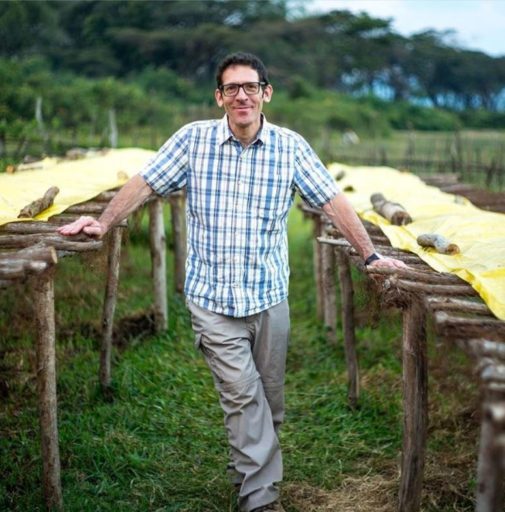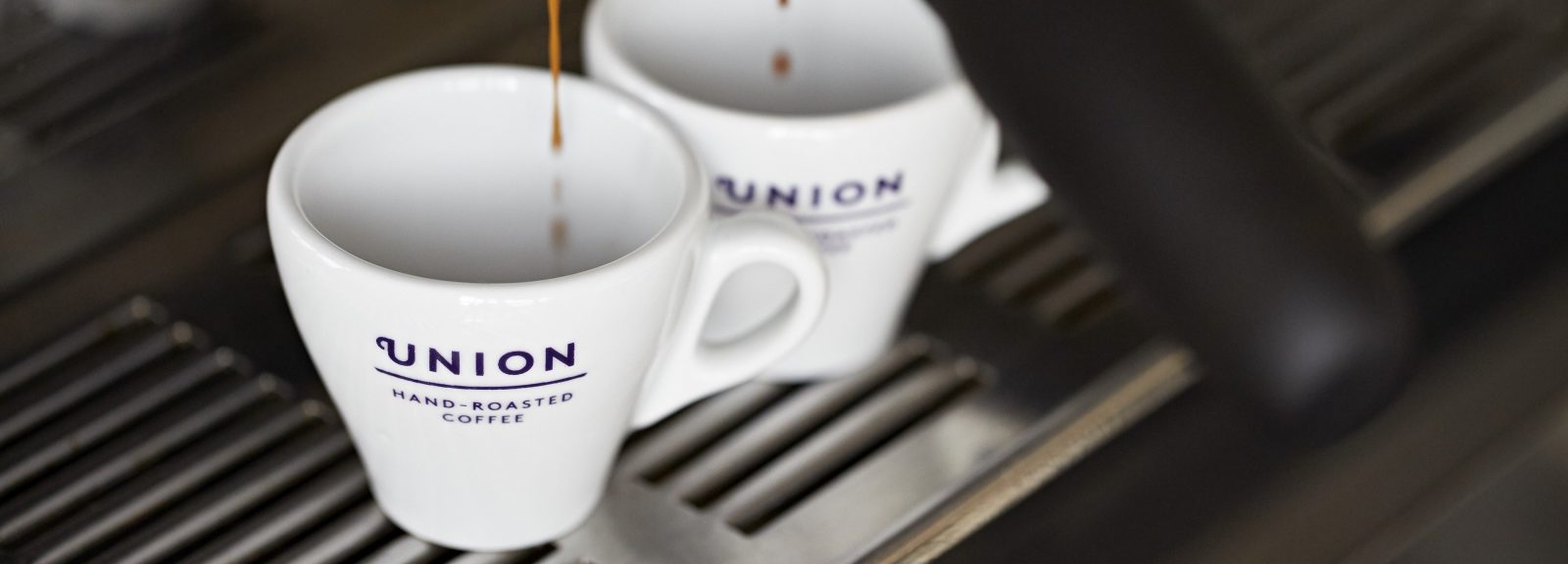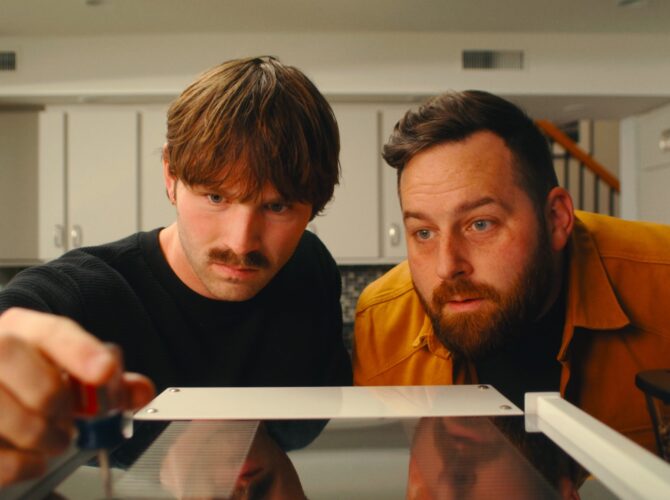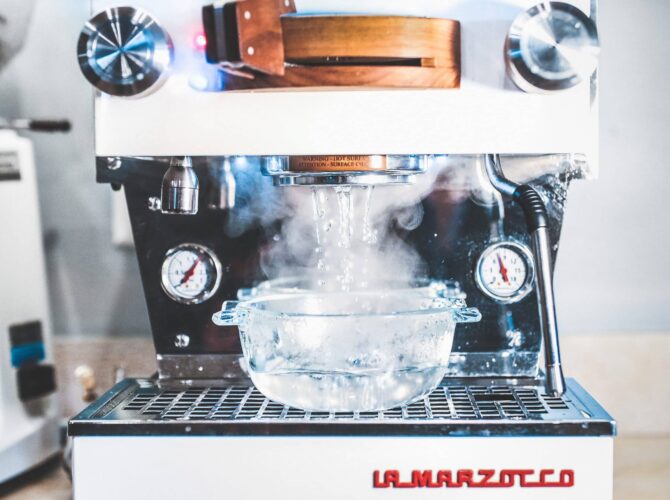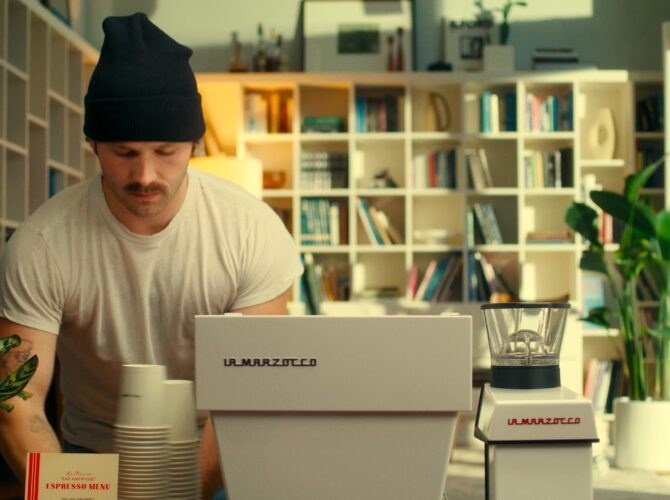Union Hand Roasted have been a longstanding partner of La Marzocco, with many of their customers across the UK using GB5’s in their bakeries and cafes. With the launch of the GB5 S and GB5 X, we caught up with Union Hand Roasted to look back together at the elegant engineering and eye catching design of the original GB5.
We spoke to Jeremy Torz, one of the co-founders of Union Hand Roasted, about how the GB5 has impacted the coffee industry, why it is the perfect fit for many of their customers and the importance of specialty coffee within the hospitality business.
You can watch the full interview here or you can read the interview below:
How was the company positioned in 2005 when the GB5 was released?
We started Union Hand Roasted Coffee in 2001 with a very clear sense of mission and purpose; which is about making specialty coffee attractive to all the people who’ve proved the first four or five years of the coffee movement in the UK, which really started in the late 90s when the chains started the march on the high street.
We’d seen people adopt the habit of coffee much quicker than many of us in the trade anticipated and how much it became that moment in daily life. But it was still largely about the habit of consumption rather than thinking “this is something I’m enjoying and therefore I should cherish it”. And I suppose there’s a part of that, Steven and I coming out of our former businesses ‘Torz & Macatonia’, which ultimately became part of the Seattle Coffee business and was then acquired by Starbucks coming into the UK market.
It was a time when we wanted to rethink the role that coffee had and what it meant for people. We’d started Union off the back of visiting origin countries and seeing the real devastation that the commodity trade had been responsible for over the generations and tried to put arguments for great quality coffee, emotional arguments as well as taste led arguments, and that led us to develop Union.
I suppose there weren’t very many boutique coffee specialists on the High-street. I think it’s hard to remember sometimes but looking back to that period, it was when I think of people along the likes of Peter at ‘Kaffeine’, ‘Fernandez & Wells’, and before some of the small roasteries that we know of and regard today around the country. It was almost back to ground zero but at that time we had a strong sense of our purpose and we were heavily engaged on our Rwanda coffee project. I was out there 3,4,5 times a year so personally my time was very split between the origin side of coffee and developing some of our clients that were coming on board looking for those sort of better experiences.
When the GB5 came out is was kind of at a time when the Third Wave was beginning to morph into a Fourth Wave, which meant looking for more control over the coffee and a better experience for baristas.
The GB5 was the first machine that came along where you could select digitally the temperature for the brew group; have the three different brew groups, if you had a three group machine, all at different temperatures and it was for us talking to the first wave of enlightened coffee businesses if you like.
It was the first opportunity for our story really to extend from field to cup because we, up until then, could talk about all the love and the care that went into coffee. Then we’d bring this beautiful microlot forward and say the extraction temperature should be like 91.5 rather than 96 and up until that control was available to baristas on a machine, that final part of the crafting and the caring of coffee was kind of external to peoples experience.
So it was a really terrific tool to be able to bring in and demonstrate that baristas and café operators had as much hand in crafting that final beverage as we did in sourcing and roasting coffee.
It was the right time for that to come out, and I don’t know whether you could put where the chicken and where the egg sits but was an innovation like that, the control availability on the GB5, responsible for more barista getting engaged? I’m sure there are many at La Marzocco that say ‘yes, of course’ but one certainly played to the other and that increasing sense of the technical skillset that baristas bring to bear on the coffee.
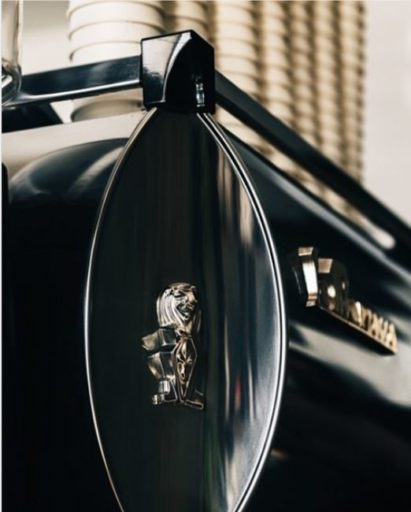
So 2005 represented a shift in specialty coffee in the UK?
I think a lot of people seem to talk around 2009 as being the ground zero year for specialty coffee in the UK. But coffee is both science and creativity and the argument between artists and scientists is always that “If Leonardo hadn’t come along, somebody would have painted the Mona Lisa. Whereas if Newton or Einstein hadn’t done their work, then there wouldn’t have been the foundations today to base Quantum Mechanics on”.
So the science and the technical is a progressive journey, and coffee has opened up the art side. These explosions, or these leaps forward in society, culture, technology, they rarely rarely happen all at once. There’s always inevitably a lead up and a progressive development of either willingness, acceptance or technology that form the activation points of that.
I think it’s interesting how the specialty community have rediscovered some of the truths and I think quite rightly there was a propensity to tear everything up and want to be seen to start again. That certainly is, I would say, valid in the sense to question everything but I think some bath water was thrown out along with the babies in those early days.
I remember an event that La Marzocco sponsored at one of the international SCA gatherings, where they brought together some terrific operators from the US and one said: “Something we discovered when we went to 4/5 shops, that paddle doses do actually have a viable place and if you use them as the manufacturer intended them, they’re surprisingly accurate”. I think that there has become now a willingness to look back at what has come before in coffee and reexamine the validities of some of those things; whether that’s roasting, degree of roast, brewing ratios and how those are used. They’re all being reexamined from a point of view of does this make sense to me as a consumer as opposed to be being a purist evangelist that only takes a certain approach. It’s reality over dogma. I think that informs more of the conversations within the coffee community nowadays and I think we’re moving forward as an industry much more cohesively as a result of that and the opportunities for people coming into the industry and developing their skills, their knowledge, their expertise, is greater because of that as well today.
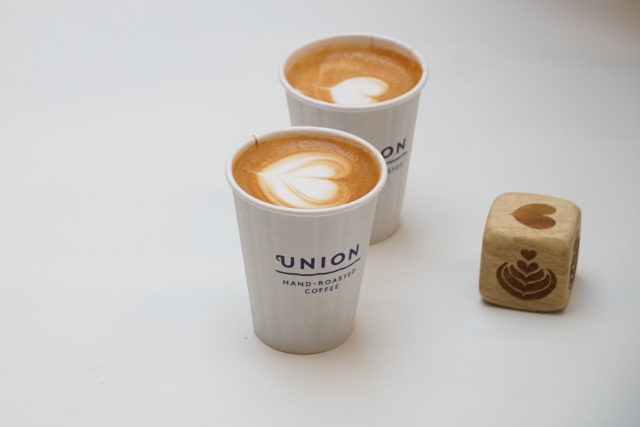
So equipment being really key in helping in that development, whether that’s a personal skillset or just consumer own attitudes in coffee as well?
I think in a space like coffee it is an important aspect
Prior to the GB5 being launched, what were your experiences, and your wholesale partners experiences, with La Marzocco?
I’ve known La Marzocco since the mid/late 90’s really, before they were available in the UK. The biggest advantage that La Marzocco brought to the specialty market was the dual boiler system which the Linea (Classic) had. Up until La Marzocco was available, most coffee shops were limited to operating with single boiler machines. As we all know, the style of coffee which has largely been adopted, which is sort of a north Americanization of the original Italian trends, that came with the need for larger drink sizes, steam capacities on the machines, which were unheard of in the native Italy of the coffee machines existence.
That changed performance standards and it changed requirements, and prior to getting my hands on the Linea, it was always a tug of war between boiler temperature and steam pressure availability and throughput.
So La Marzocco absolutely established itself as the go-to machine and in many cases even consumers, sort of early adopters of quality coffee, started to look cautiously through the window of the Coffee Shop to see if you could see that sort of boxy stainless steel machine on the counter which would signify that there was a fighting chance of getting a decent cup of coffee.
The Linea was just a terrific tool for Baristas and coffee shop operators because for the first time you had that comfort that your shots would be coming out at the right temperature and you could produce the volumes of steamed milk that were necessary in those early days of consumers requiring, or not being satisfied with, anything smaller than a 12oz cup.
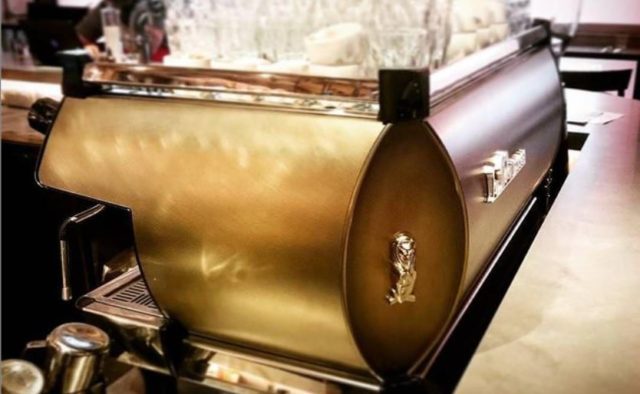
GB5 @duckandwafflelocal
If we look at those features and cast an eye back to the GB5 and 2005, what were the key features of the GB5 that made it an attractive machine of choice?
I think one of them that leant in, if I’m right, was the group head height was more open in terms of being able to allow taller cups to be used. Not necessarily that that was taking things in the right direction but certainly it was helpful and allowed throughput on the bars and the workflows to be efficient.
But it was really taking the progressive developments; I think just before the GB5 was brought in, the PID kits became available for Linea. Having the GB5 having those as standard was a further enhancement on that quality platform that La Marzocco offered, meaning not only could you set that temperature to half a degree, but you could be confident that it was pretty much going to stay there so those elements, and of course the aesthetic design of it, was appealing to many users. That sort of curved look then obviously laid the seeds for what the Strada would then come and look like as well, so probably for the first time it started to bring in a design ethos to the La Marzocco quality platform and may have opened up the market to sort of wider hospitality customers where look was as important as the function of the machine.
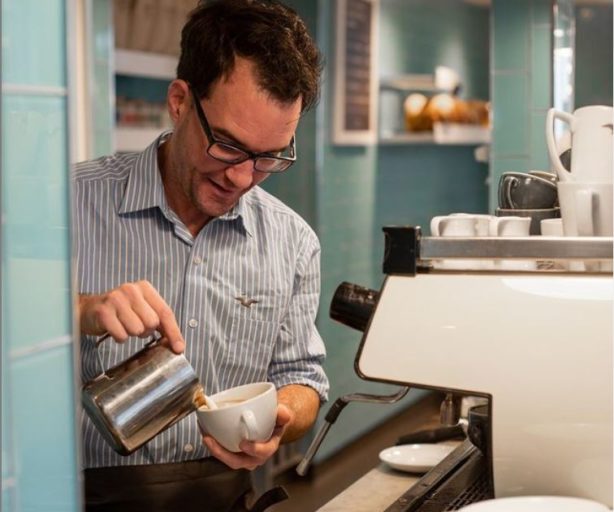
GB5 @cornishbakery
Speaking of partners, for example you work with The Cornish Bakery. What makes the GB5 a good fit for a company like The Cornish Bakery?
It reflects that journey aspect that we’re all on, and have all been on, in coffee. If I think back to that sort of era, Union was growing at a reasonable pace in those days and as I said, we’ve always wanted to encourage the next wave of coffee consumers to come into the cafes and the hospitality venues that we service and I suppose the customers groups like The Cornish Bakery were also on a journey. They could see where coffee was becoming more important and wanted to make sure they could absolutely deliver that.
Having started to work with us and being challenged to offer ever better coffee, it’s how do we fulfill that at store level. It was 2003/4 when we started to create our first sort of bespoke training plans for customers like that. Roasters would like to be able to deliver on the moments of barista support and training. It’s a large cost for roasters to bare but you don’t feel bad about doing it when you know you can get the knowledge across and see those practices that will be seen as important and taken on by those customers.
The Cornish Bakery, as a multisite operator, wanted to be able to have standards in place and part of that is creating coffee careers within businesses so we work with them to develop not only lead barista, or head barista roles, but as they had a number of cafes from the Southwest up through the West Country, and not necessarily many shops in each areas, how do you create structures within those businesses where knowledge can be retained and people can see the validity of learning. Learning their craft so they can progress and move up and service the coffee demand in that business and help to manage and control it to be a quality offer.
The GB5 gave us the tools to say, “Okay, here’s a set of skills that you can learn and master”, and part of our training programmes has been ‘train the trainer’ because we know we need to see that ability within our clients. So whether it was The Cornish Bakery or other businesses like Peach Pub Company, who had grown up from their first outlet in Warwick where they were food led, probably one of the early Gastro Pub businesses, very high quality food, comfortable country town pub environments. An environment that most coffee roasters would have said is death for good coffee because bar staff just want to serve the wet side bar and they don’t want to be making coffee. But if you can build it into being a real part of their programmes, then they can understand it and get behind it.
The Cornish Bakery was really the first sort of client where we worked to develop that technical skills development platform that could be employed within the business and having a machine, and a machine partner in La Marzocco, who were proud to represent that, it strengthened the overall relationship between roaster and client and machine partner as well.
Great coffee is a team experience or like a theatre company, each actor has to play their part to deliver the overall performance. If somebody steal the scene, you remember that person and not necessarily the great overall experience so each of us respecting the others contribution is important part of how the specialty movement needs to move forward.
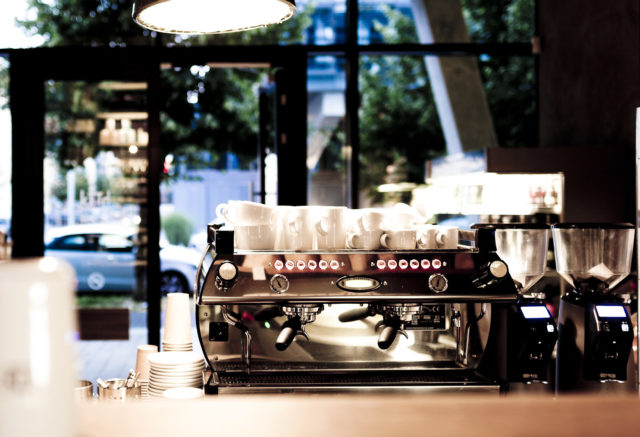
When the GB5 was first released, it was unparalleled when it came to temperature stability. Would you say the temperature stability of the GB5 helped increase coffee output from end users?
I suppose if you’re talking about output, what it did was showed the interested operators that they could accurately reflect the diversity of coffees flavour experience. I certainly remember back in our early years as a roaster, sometimes a client doesn’t have equipment you think you can work with, or you may choose as part of a transition to say “Well, we’ll work with this machine that you’ve got until 6 months’ time when you can afford to replace it within your budget”, and that did limit the choice of coffees.
I very clearly remember going to certain clients and the client would say “What would you recommend?” and sometimes those recommendations would have to be based on “Well I think this machines only capable of producing coffee up to X level”. So I’ll propose a coffee that’s got some tolerance to it but it was more about shaping the experience around the machine rather than allowing the machine to present the cafes best options to the customer. When technology like the GB5 came in, it was capable of turning those situations around completely.
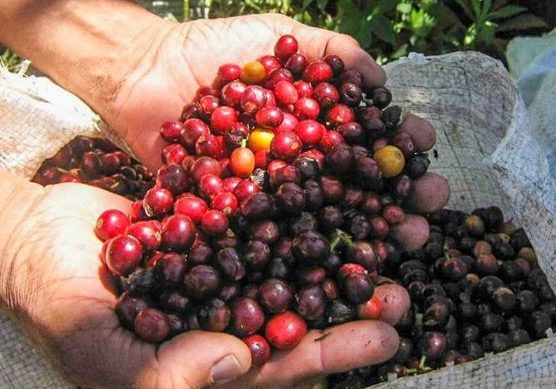
How do you think business had changed overall in the past 15 years and has the GB5 managed to stay in line with that demand?
I think the consistency aspect of serving good coffee is hugely important so I think the ability to set and maintain accurate temperatures at the group head, I don’t think, will ever change. I think that’s a fundamental upon which anything else can be done. One of the important things now, I suppose, is the serviceability of the machine and fortunately the La Marzocco has always been a very reliable product. It’s always been a very reliable unit, certainly a workhorse machine is what it’s always been considered.
Sometimes we get confused about what’s nice to have and what’s necessary to have. I think there are, as is the way of social media, some people will bubble up and everyone will go “Yeah, we must have that on a machine” and a couple of manufacturers will run off and try to respond to the market and I suppose gravimetric has been one of the things that has come and gone as a high priority issue. 3 or 4 years ago everyone was thinking “In a few years’ time, all espresso machines are going to have gravimetric dosing”, but that’s not really proven to be the case and I think some of these technology improvements sometimes are a mask for a lack of skills development or seeking to deskill the process probably more.
But I think the long term future is about craft and pride and an exchange of a value based moment between consumer and barista.
The more we can get customers to respect the craft of coffee, then the more we can build an understanding customer base that’s prepared to see innovation, not necessarily in what a machine does, but in the quality of the experience which is still between the paying customer and their cup of coffee and that is what we need to keep in mind as the industry evolves.
What can we better do to solidify and strengthen that relationship? Because it’s that that is ultimately going to give us all the opportunity to be able to ask for a higher price for a cup of coffee. Whether that goes to supporting a Café which is beautifully designed and in a gorgeous location with a high rent, or an off the High-street place that’s just crafting amazing experiences and chooses to pay baristas way above the living wage. So there’s different economics choices to make in there but anything the industry does is ultimately got to be about the bond we have with our customer and the value we place on those people long term
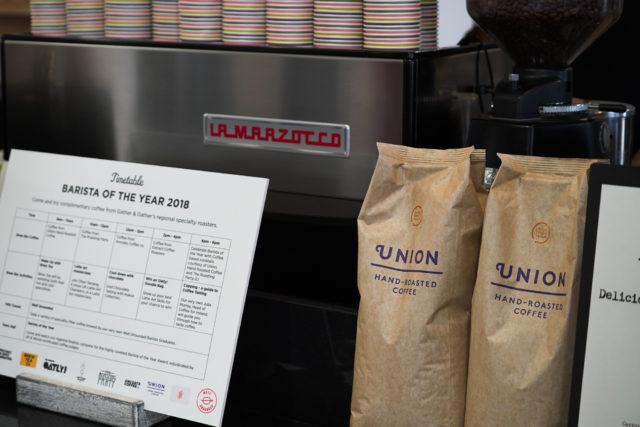
How could the GB5 evolve in the future to suit the market place it sits within?
La Marzocco are an innovative company and not many of us saw the KB90 and the ‘straight-in’ portafilter coming before that was announced. It’s those sort of thinking’s that can recognize the value and help the barista. Maybe one of the areas nowadays, it’s probably less fashionable in the craft community but certainly in the scale coffee industry, is the ‘Fifth Wave’ of coffee, which is the business of coffee. So maybe more information on diagnostics and telemetry on machines, so you could say the great split between bean-to-cup super-automatics and traditional machines, one of the things that bean to cup machine manufacturers have been doing in certain markets for years is building sort of GSM based telemetry on their machines so that you can get a field service report on the condition of the machine or an engineer can diagnose before arrival. So maybe elements around that where if there’s a fault on a machine, diagnosis can be done. I think we all know that there are some things that even the end operator can do to clear a fault perhaps, or solve something to get them back to serving coffee more quickly, so elements like that perhaps that can allow us to function on time, in full, more of the time.
When you think of the GB5, what feelings does it evoke?
What really comes to mind is walking around Florence. I was lucky enough to visit the factory in its old incarnation and the new factory, which is fantastic. Memories of walking around the old factory with Piero and getting a sense of the pride that La Marzocco have in the machines. I think of the lion emblem in the corners of the machine and seeing that around Firenze and I suppose having a nice glass of wine in the afternoon with a good meal and great company in the company of a good brand.
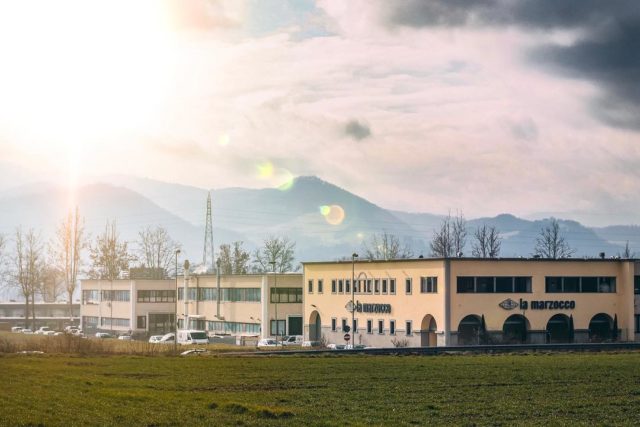
What do you think when I say to you ‘the future of hospitality and specialty coffee’?
I think it’s wonderful to hear those two words together because hospitality has often been over there and specialty coffee over here, and I think it’s a recognition that hospitality is the natural home of great coffee.
I think it’s been notable how the wider industry, and I wouldn’t say it’s all there yet by any stretch of the imagination; restaurants still have a lot to answer for and a long way to go to bring that complete customer experience into the coffee service as well. There are some fantastic restaurants that are doing a great job so far, restaurants like HIDE who we service in Piccadilly have a fantastic coffee programme there. One or two of this year’s new Michelin 3 star restaurants have, I believe, very good coffee service but it needs to be the province of the day to day restaurants and business because it does add to the overall experience.
I think if you look at another area of hospitality that has been lacking in the past which has made amazing strides in recent years has been coffee in the workplace. The catering and the hospitality companies that are running food and drink operations inside larger businesses have responded. I remember when we took on the Sky Television campus outside of West London, they invested in 13 La Marzocco’s, including 4 GB5’s for their campus there. That shows to me that there are businesses out there that are recognizing that there is more to do and that great coffee isn’t the province of just a few international jet setter travelers, this is something that the average Joe and Josephine has come to want and need in their daily life. It’s not an exclusive, it should be a most incredibly inclusive thing to have. I think there are great strides that the hospitality industry can make over coming years. Work that we’ve done with Gather & Gather, a great sort of catering operation, has made that clear and we look forward to that growing as more places finally understand the importance of offering a good cup of coffee
I think there’s going to be a strong bounce back and hospitality is going to be the NHS of post lockdown. We’re preparing for peoples emotional states and helping them get past this terrible year that we’ve all experienced so I look forward to hospitality really playing it’s part in the recovery.
